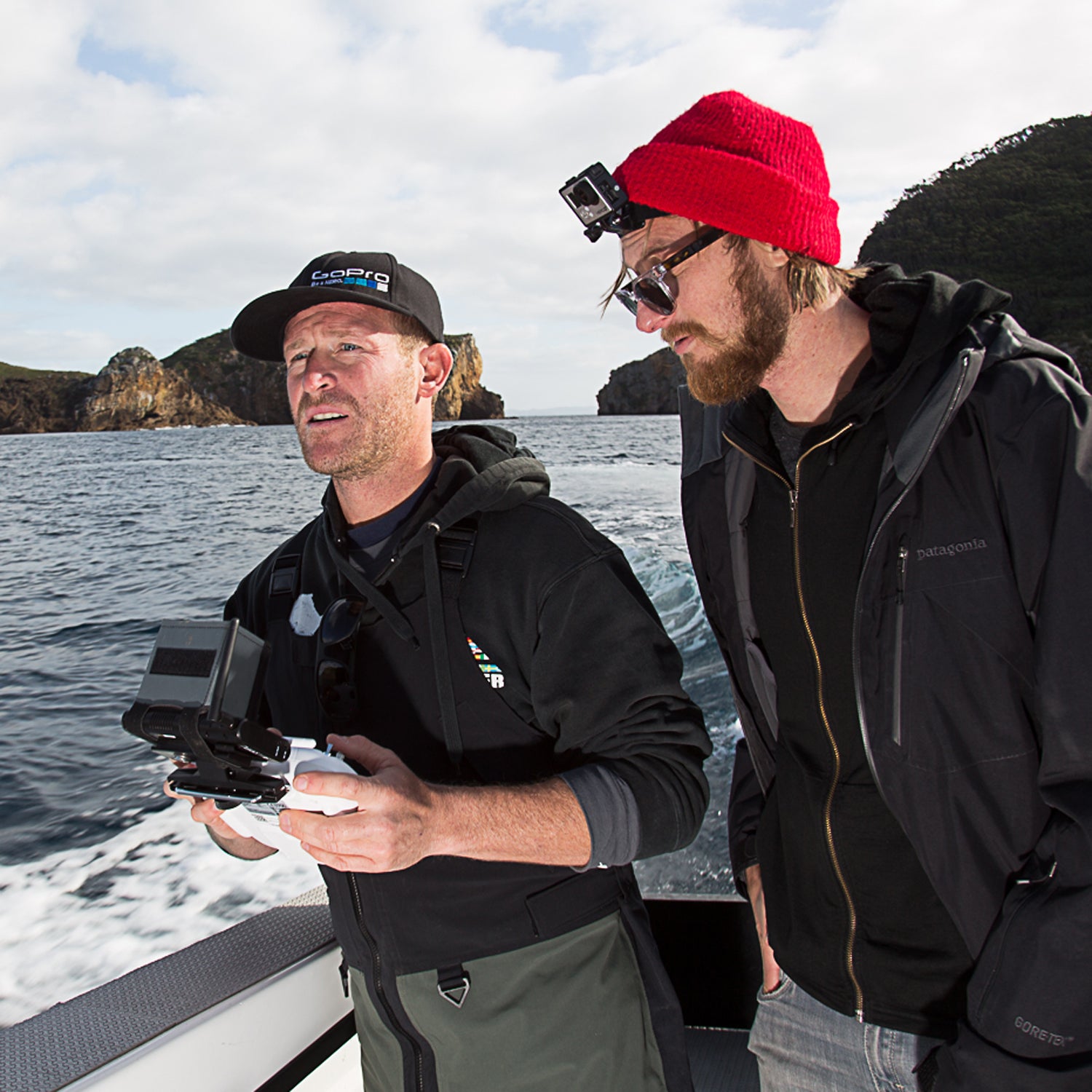The little white drone zips low over the water through the back of a hundred-foot natural arch, jogs right, out of sight, and is gone. Andy Casagrande, a 36-year-old underwater cameraman best known for to the dorsal fins of great white sharks, is standing in the back of a 24-foot twin-engine dive boat among the 300-foot rhyolite sea stacks of New Zealand’s Poor Knights Islands, an extinct volcano rim and one of the world’s great diving destinations. In his hands is a radio controller. On his face, disbelief.
Brad Schmidt, GoPro’s blond-bearded 33-year-old creative director, stands over his shoulder with one of his company’s ubiquitous little cameras strapped to his forehead beneath a not-quite-ironic Jacques Cousteau beanie. “I think there’s something wrong with that thing,” he says.
“Whoa, whoa, whoa, I’m losing reception,” says Casagrande. “Ah, shit, you see that?”
The drone has disappeared and, in the parlance of aviation disasters, lost contact. Steve Hathaway, the boat’s Snells Beach–based captain (he’s also an underwater cameraman) guns the launch through the tunnel hoping to reestablish a signal, but the drone is already on its way to the bottom of the marine reserve’s sea floor, 170 feet down. One more miniature shipwreck.
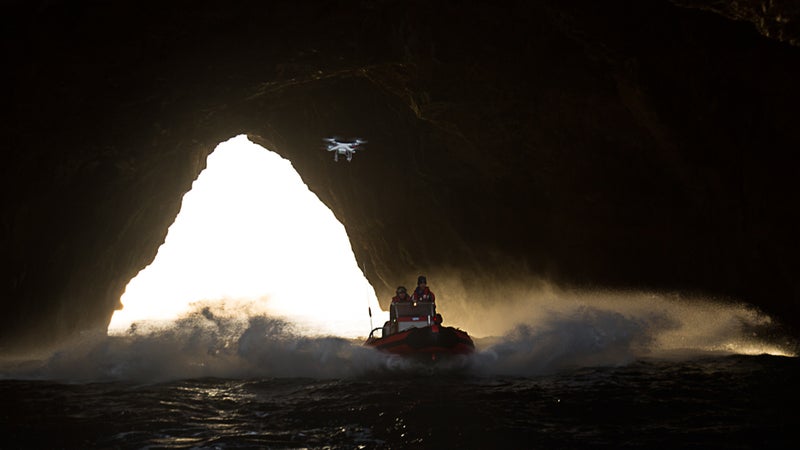
Thankfully, the GoPro camera attached to the copter was one of the company’s current Hero 3+ models and not one of the six Hero 4 prototypes that Schmidt has been entrusted with. He’s here to carry out one of half a dozen product-launch shoots. The company’s production staff and a few freelancers are spanning the globe to capture breathtaking footage and iron out the last bugs from the new camera’s operating system. The resulting (yes, one Web video from all those far-flung adventures) will be uploaded to YouTube as an example of all the amazing things you can do with your new GoPro. It's shot entirely on the Hero 4. If it’s anything like past product-launch videos, more than 20 million people will watch it.
The team is filming ice climbing on floating bergs in the north Atlantic, street racers in Japan, and a giant music festival somewhere in Asia. This particular shoot features Ingrid Visser, a 44-year-old Kiwi orca researcher who has used GoPros to document novel whale behaviors among New Zealand’s population of 200 or so killer whales. But after a week of waiting for phone calls of orca sightings, there’s still no sign of the whales, so we’ve gone out to snorkel and shoot B-roll.
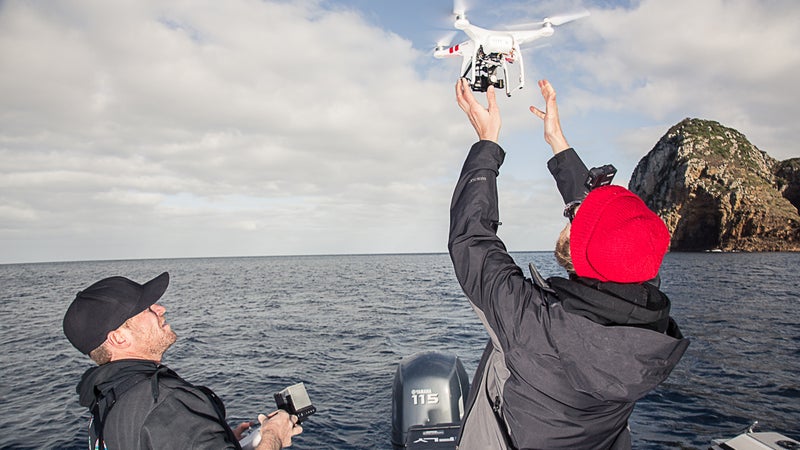
During the Hero 3 launch, Schmidt lost a prototype in a Tahitian surf break and had to pay a ransom of GoPro Hero 2 cameras to the local kid who found it. “Yeah, I don’t want to be that guy again,” he says now with a laugh. Since GoPro went public on June 26, the stock price has exploded from $24 to $78 as of late September, which gives the company a hugely optimistic market capitalization of roughly $10 billion—ten times its annual sales.
If GoPro is going to be successful, its growth will need to depend on more than just skiers and surfers. So, to extend the company’s reach, the GoPro team is trying to think like a media company, producing wildlife documentaries, leaning on the GoPro-toting public to provide them with amazing footage, opening up channels on Microsoft’s Xbox media player and elsewhere, and in general expanding the concept of who uses a GoPro.
“Nick said, 'What if we didn't do any action sports at all?' I responded, 'I'm nervous about it but let's go for it.'”
“Nick” is Nick Woodman, the company’s 39-year-old founder. And the big news of late is that GoPro, in going public, has decided to invest itself in becoming a media outfit. “Sometimes we get pinned as being about action sports,” said Woodman at the Hero 4 product rollout in San Francisco last week. “And that’s our heritage. But if you watch the [launch video], it’s science, technology, music, sport, culture, nature. It’s basically growing to become life.”
To that end, GoPro is attempting to become a lifestyle as much as a technology. In 2013, Woodman became the title sponsor of what was the Teva Mountain Games, renaming the Vail, Colorado, adventure sports festival the GoPro Mountain Games.
“People have called GoPro a movement,” Woodman said. “At first maybe you think that sounds a little heady and out there, but the truth of the matter is you all know it. The groundswell of compelling content across so many different use cases. I mean, that is definitely a movement.”
The question is whether GoPro can harness that groundswell to make money—enough to support a $10 billion valuation—by creating and selling content. Last year GoPro sold nearly one out of every two video cameras bought in the United States, more than a billion dollars worth in all. Adding to that success with moving pictures shot on a tiny camera will be no small task. As the guy who started GoPro’s YouTube channel and drives its creative direction, Schmidt has suddenly found himself in a very prominent role.
Schmidt and Woodman met in 2002 while surfing in the Mentawais, an island chain off Sumatra. At the time, Woodman was trying to perfect a wrist strap that would allow the wearer a convenient place to keep a disposable plastic film camera while surfing. No camera company wanted to work with him, so he started manufacturing his own. Schmidt, who was raised in Pagosa Springs, Colorado, was nomadic at that point, having lived in South Africa and worked as a surf guide in Samoa. “A lot of that stage was just seeing how long I could stay out traveling,” he says.
When Woodman launched his video-enabled Hero Cam in 2006—it recorded 10 seconds of questionable video to an internal drive—he sent Schmidt to Indonesia to get some shots with it. After in May 2009, Schmidt joined Woodman that August as his 14th employee. YouTube was three years old and had just added HD capability. “In the early days, the edits were slammed together so fast,” says Schmidt. “I don’t think I spent more than a couple of hours on some of them.”
When deciding whether to greenlight filming projects, Woodman would do a quick mental calculation of the film budget and ask, “Do you think this video will sell a thousand cameras?”
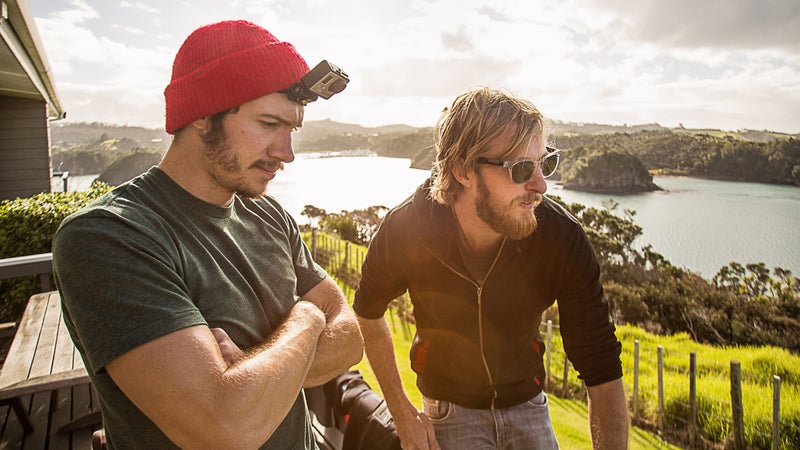
Today, production budgets are in the $50,000 range, with Schmidt racing off to Tonga to shoot bikini-clad freedivers or South African conservationist Kevin Richardson in a wildlife sanctuary. That’s also Schmidt in the green camo wetsuit shooting the blue whale intro to The Cove director Louie Psihoyos’s new documentary, 6. The company has put a surprising emphasis lately on wildlife conservation movies, which is a radical departure from the dubstep-backed adrenaline sports the cameras are best known for capturing.
“Before, it was almost like we were Nick’s pet project,” says Schmidt. “We were his little black ops. But everyone is paying attention to us now.”
The GoPro YouTube channel has swelled to more than 2 million subscribers and routinely outperforms its most obvious competition in the lifestyle realm, Red Bull, the privately held energy drink company that has become a media giant. It’s the kind of success that might seem odd when you consider that, until the 2012 launch of its Hero 3, GoPro didn’t even manufacture the best action camera on the market. That spot belonged to the Contour HD, a sleek, well-made lipstick-shaped camcorder with the bulk of its funding going into R&D. But Woodman proved that the camera came second to the content.
“Technology isn’t what’s important,” says Woodman. “It’s what these cameras enable.”
Only now, the technology has caught up. According to Schmidt, “We’ve gone from being, with the Hero 2, one year behind the curve to the H3 being right at the bleeding edge. Now, with the Hero 4, we’re really the ones pushing the envelope.”
Using the new cameras, Schmidt and GoPro’s other 40 or so full-time creative producer/editors—along with a deep roster of pro action-sports athletes like Kelly Slater and Julia Mancuso—have quickly made GoPro’s YouTube channel the most successful of any product brand. While talented filmers and interesting personalities are a proven formula for racking up clicks, the company’s user-generated content (UGC) does even better. Videos submitted by users, like “,” have lately overtaken the professionally produced movies. The most popular single video, aside from the product-launch reels, is a UGC video called “,” which has been viewed 23 million times.
“I honestly don’t know how many people we have. It’s growing that fast,” Annemarie Hennes, the producer in charge of the UGC division, told me in New Zealand. “I bet I’ll get home and there will be four new people. We had three people when we made the “Firemen Saves Kitten” video. It’s definitely the fastest-growing part of the team.”
What remains to be seen is whether YouTube pre-roll ads—those 15-second ads that run before some online videos—and footage licensing can support a multibillion-dollar stock price if action-cam sales plateau and the company can’t find applications in other niches, like the $15 billion per year security camera industry or the Russian dashboard camera industry. But as a sign of things to come, GoPro announced a deal this week with the National Hockey League to mount cameras on players. Imagine being able to cut to the first-person view in other sports, like football.
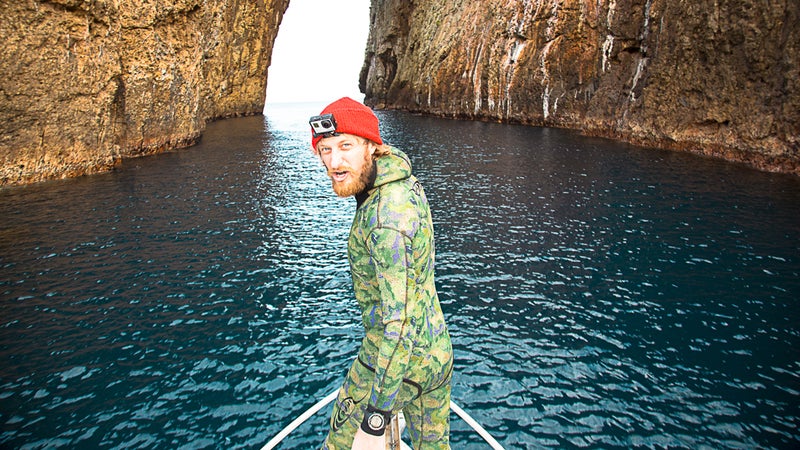
For the time being, GoPro is trying to make money on YouTube ads. Over the summer, the company began allowing YouTube to run commercials ahead of its content.
“It’s weird,” says Schmidt, who recognizes that his work is still advertising. “It’s like watching somebody else’s ad on your ad.”
That’s another way of saying that GoPro’s content team is doing what they’ve always done, which is to make people aware of what they can do with the little cameras. To that end, people who’ve been asking the obvious question about whether GoPro can be a media company are concerned with the wrong thing. GoPro will probably never make billions of dollars licensing its footage. But by making its cameras ubiquitous, the company may succeed in convincing everyone in America that, in addition to a cellphone, the GoPro is the camera they need to share their lives. “We really are enhancing the way people communicate, and we really are making people feel good about themselves, because they’re seeing themselves doing what they love to do and we’re making them look good doing it,” said Woodman.
Back in New Zealand, Visser answers her phone with the resolute professionalism of a 911 dispatcher: “Orca Research Trust. Ingrid speaking.” And then her mood sinks when it’s only one of her assistants asking what she’d like for lunch rather than a beachside homeowner calling to tell her that an orca pod was frolicking close to shore. Visser was one of the biologists who helped reintroduce Keiko, aka Free Willy, to the wild. She was also an expert in the U.S. Occupational Safety and Health Administration’s case against SeaWorld after one of its whales killed a trainer in 2012. She’s now dedicated to freeing a female orca named Morgan, the headline attraction at a SeaWorld facility in the Canary Islands called Loro Parque.
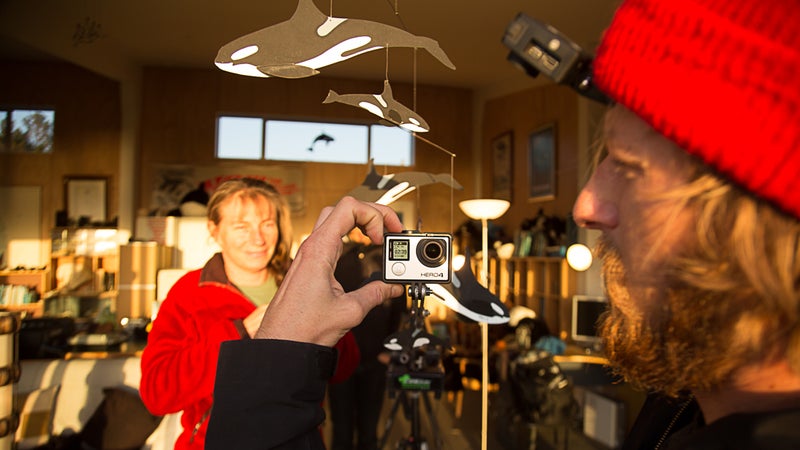
The orcas never did arrive in July. But in September I got a note from the boat captain and cameraman Steve Hathaway. The whales had finally appeared, and it had been amazing. They’d gotten a call about an orca whose fluke was entangled in a lobster pot line, and they raced in for the rescue. “It was one of the most incredible things I’ve experienced,” wrote Hathaway. “I had two orca within 12 inches of my face watching as I cut the line to their (presumed) mother.”
And, of course, the cameras were rolling for all of it. You can see it in the climax of that Hero 4 launch video.


